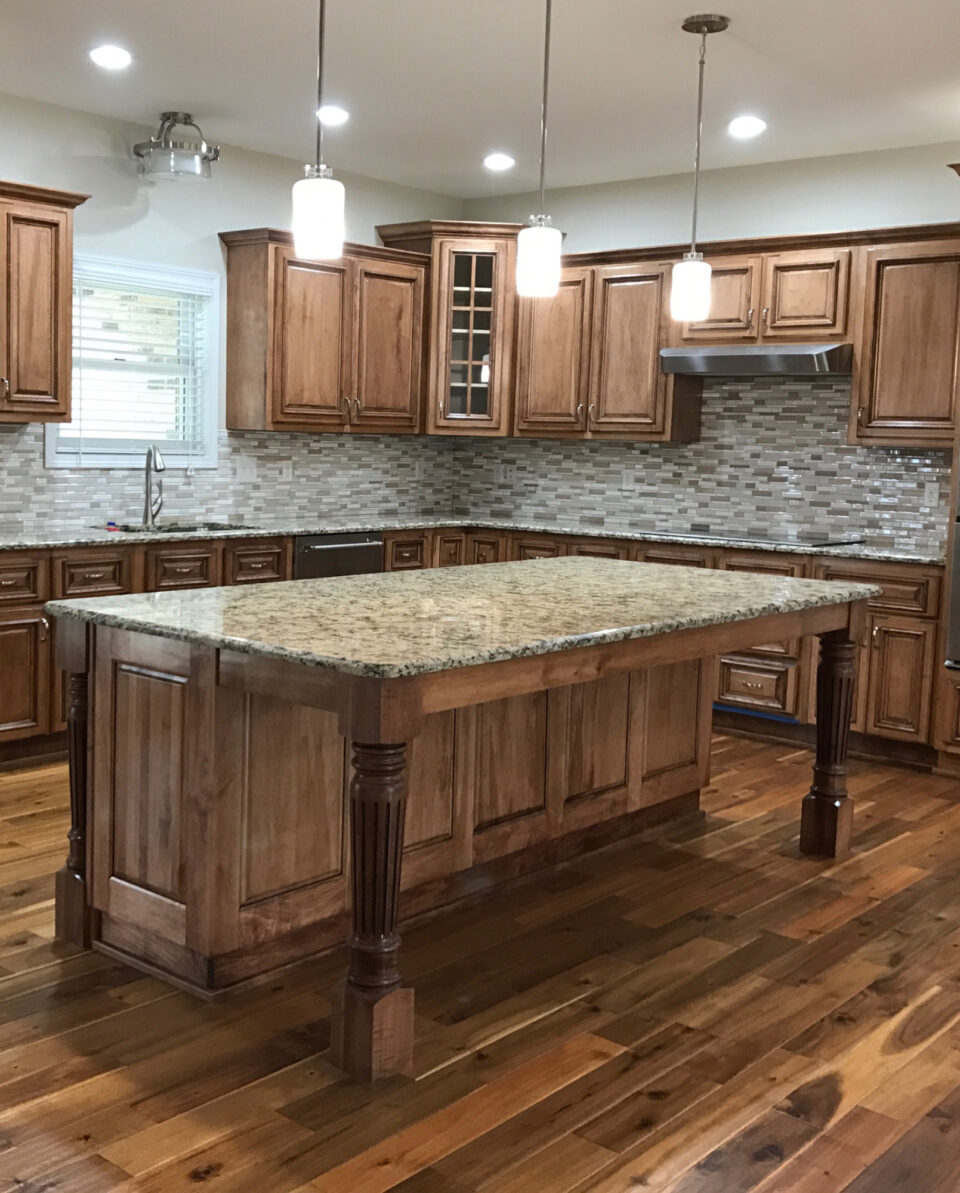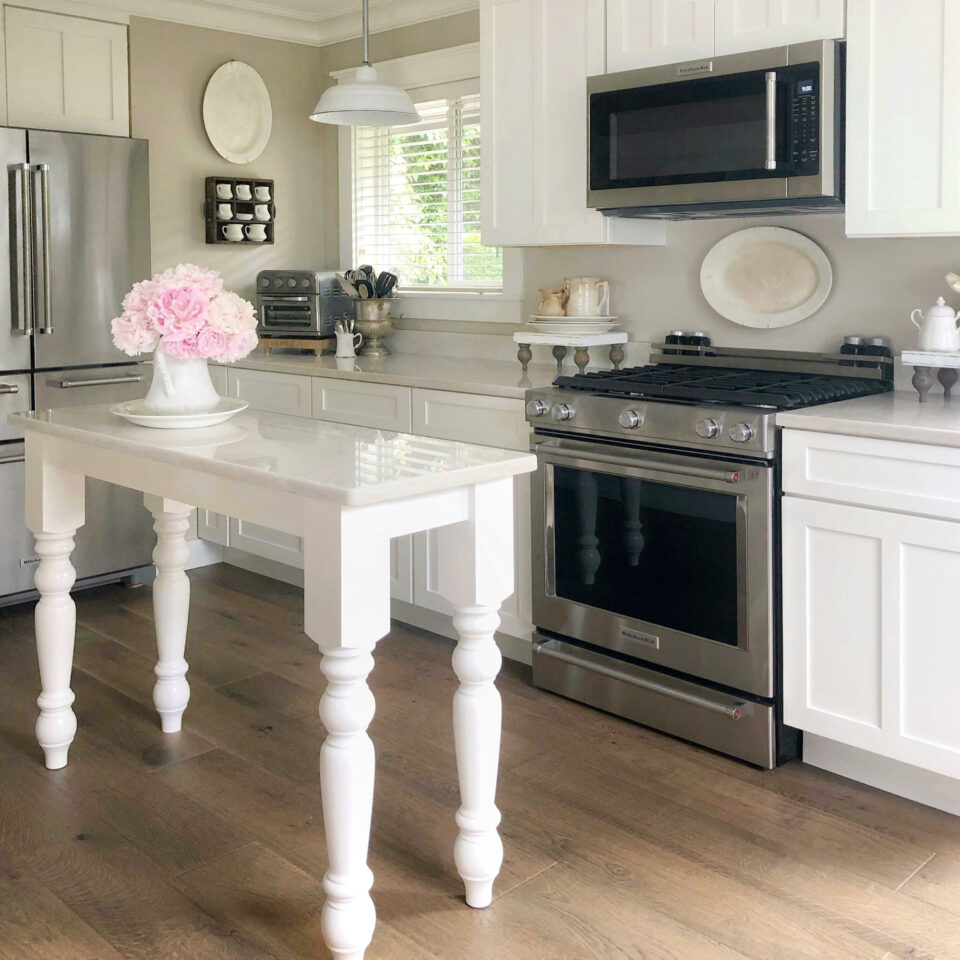Elegant Kitchen Island Leg Concepts to Raise Your Kitchen Decoration
Elegant Kitchen Island Leg Concepts to Raise Your Kitchen Decoration
Blog Article
Discovering the Crucial Attributes of a Kitchen Area Island Leg for Your Culinary Space
The kitchen island works as a main hub in any kind of cooking space, and the choice of leg layout is crucial in boosting both its performance and visual allure. Comprehending the essential attributes of kitchen area island legs-- including product options, layout styles, and security elements-- can significantly influence the overall experience within the cooking area. As we check out these elements, we will certainly uncover exactly how thoughtful customization and devices can raise your kitchen area island from a simple utility to a striking centerpiece. What specific considerations should be prioritized to achieve this equilibrium?
Value of Cooking Area Island Legs
Kitchen island legs play a critical role in both the performance and aesthetic appeals of a cooking area space. They not only support the weight of the island however additionally enhance the overall layout, adding to the kitchen area's aesthetic allure. The selection of legs can dictate the style of the kitchen, be it contemporary, typical, or rustic.
Functionally, durable and properly developed legs make sure security, allowing for the safe use of the island for different tasks such as food prep work, eating, or enjoyable. Strong legs stop tottering and changing, providing a reputable surface for everyday activities.
Additionally, the height and placement of the legs can influence the comfort level for those seated at the island. A well-considered height can accommodate bar stools or chairs, advertising an inviting setting for celebrations.
In enhancement to these functional factors to consider, cooking area island legs can work as a centerpiece in the room (kitchen island leg). Attractive or distinctly created legs can boost the style visual, making the island a centerpiece. Hence, picking the appropriate cooking area island legs is crucial for stabilizing type and function in any cooking area
Material Options for Legs
Selecting the suitable material for cooking area island legs dramatically affects both longevity and style. Typical product alternatives consist of rock, wood, and steel, each offering distinctive advantages.
Timber is a prominent choice as a result of its warmth and flexibility. It can be conveniently personalized to match various decoration styles, from rustic to contemporary. Woods like oak and maple provide superb stamina and longevity, while softer woods can be more prone to tear and put on.
Metal legs are preferred for their sleek, modern-day aesthetic. kitchen island leg. Stainless-steel and aluminum are not just durable however additionally resistant to corrosion and corrosion, making them excellent for kitchen settings. They can create a commercial appearance and are commonly available in different coatings to complement other cooking area elements
Stone legs, such as granite or marble, include an aspect of deluxe and stability. While much heavier than various other materials, they provide exceptional toughness and can withstand considerable weight. Nonetheless, they might call for extra assistance to ensure appropriate equilibrium.
Ultimately, the choice of product must align with both useful demands and the overall layout vision of the kitchen area space, making certain that the island legs improve both utility and aesthetics.
Layout Styles to Consider
What style styles should be taken into consideration when selecting legs for a kitchen island? The option of leg style dramatically influences the total aesthetic of your cooking room. For a contemporary kitchen, sleek and minimalistic leg styles, such as stainless-steel or geometric forms, can enhance the contemporary charm, offering a clean and clean look.
On redirected here the other hand, standard kitchen areas gain from traditional designs such as turned or sculpted wooden legs, which include heat and character. These choices frequently include intricate details that enhance vintage furnishings. For a rustic setting, consider legs made from redeemed wood or wrought iron, which bring a natural, natural quality to the area.
If you lean in great post to read the direction of a commercial motif, robust metal legs with a distressed surface may be ideal, supplying an edgy yet innovative touch. Additionally, farmhouse style cooking areas can integrate chunky legs that stimulate a feeling of sturdiness and homeliness.

Elevation and Security Elements
The height and stability of a kitchen area island are important aspects that straight impact its functionality and customer experience. An excellent cooking area island leg must offer enough height to accommodate a selection of jobs, from food prep work to casual dining.
Stability is similarly vital, particularly as kitchen area islands commonly act as focal points in cooking environments. A steady leg layout decreases changing and tottering, which can cause mishaps or pain during use. Materials such as strong timber, steel, or a combination thereof are frequently utilized to achieve the necessary durability. The leg's accessory to check these guys out the island's base should be protected, ensuring long life and strength versus the wear and tear of everyday use.
Personalization and Devices
Personalization options and devices for kitchen island legs can dramatically enhance both the visual appeal and functionality of the room. Home owners can choose from a variety of products, including timber, stone, and metal, permitting seamless integration with existing cooking area decoration. The selection of surface-- be it an all-natural stain, repaint, or powder covering-- additional personalizes the look, ensuring that the island matches the total design style.
Along with material and surface, home owners may likewise discover the incorporation of devices such as ornamental braces, flexible feet, or integrated shelving. Brackets can use added support while adding to a rustic or modern-day aesthetic. Adjustable feet are especially helpful for unequal floor covering, ensuring the island remains steady and level, which is critical for both safety and usability.

Conclusion
In verdict, kitchen island legs serve a critical function in giving security and improving the total aesthetic of the culinary area. The option of products and design styles adds to both performance and aesthetic charm, while considerations of elevation and security ensure functional use. Moreover, customization choices and devices can boost the cooking area island, making it a distinctive centerpiece within the home. Hence, mindful factor to consider of these features is important for an efficient kitchen area style.
The kitchen island serves as a main center in any kind of cooking area, and the choice of leg layout is crucial in improving both its performance and visual appeal. Recognizing the crucial attributes of kitchen area island legs-- including material alternatives, layout styles, and security elements-- can considerably influence the overall experience within the kitchen.Kitchen area island legs play a critical role in both the capability and aesthetics of a kitchen room.What style styles should be considered when selecting legs for a cooking area island?In final thought, kitchen island legs offer an essential duty in giving stability and boosting the general visual of the culinary space.
Report this page